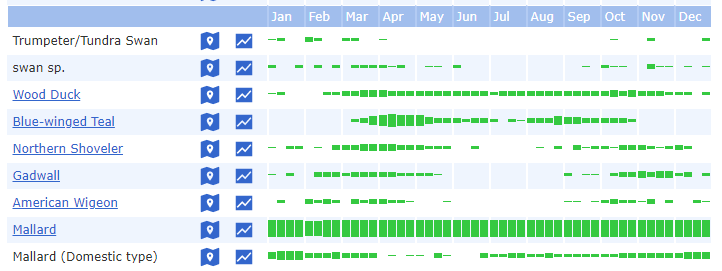The main entrance to Montrose has been closed a couple of times in the morning since the park reopened in late February. The gate should be open by sunrise but was still locked at 6:30 a.m. and 7:15 a.m. when I tried driving in in early March. If this happens, drive north to the entrance at Wilson Avenue or Lawrence Avenue and enter there. You can also enter the park at Foster Avenue.
Category Archives: General
Probability and Birding
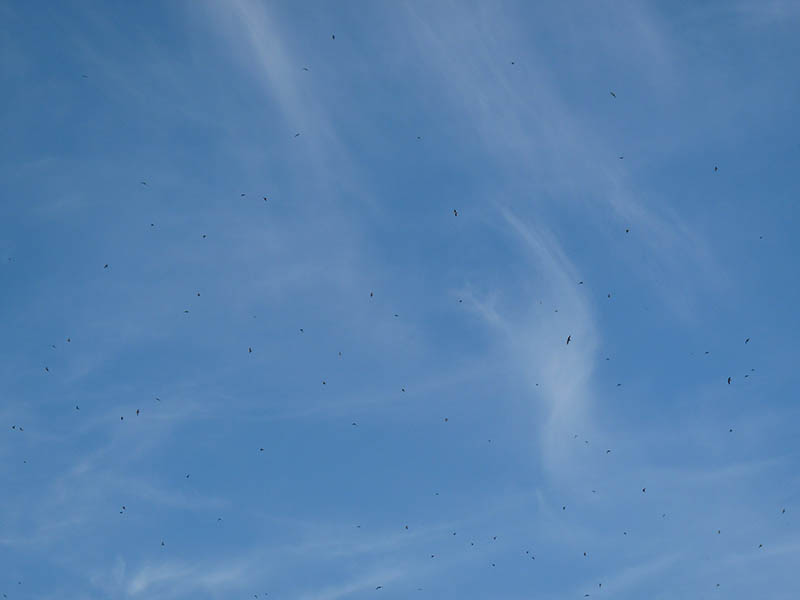
Migrant Chimney Swifts swarming over Montrose Point in Chicago, September 2015 (click to see the larger version)
Probability plays a big part in birding. By probability, I mean using history and what’s expected to aid identification. A good example is identifying swifts. If you see a swift in Chicago, chances are overwhelming it’s a Chimney Swift, the common and regular swift in the Midwest. You don’t have to scrutinize field marks to know, with a high degree of certainty, that a swift in Illinois will be a Chimney Swift. In fact, Chimney Swift is the only swift we see in Illinois – there are no verified records of other swifts in the state as of 2021. Where probability falls short and becomes problematic is if other possibilities for occurrence exist. Chimney Swift may be the only swift recorded in Illinois, but it’s not the only swift species recorded in the Midwest or eastern United States. A check of eBird reveals a handful of records of four other swifts in the United States east of the Mississippi River – Vaux’s, Black, White-throated, and White-collared. If you relied solely on probability for swift identification you could miss something unexpected. Swifts are strong-flying, migratory birds, and the number of vagrant species that have shown up far out of range in the United States warrants not relying solely on probability to identify them. My approach is to use probability as a general guide but to be mindful of other, less likely possibilities if they exist, and be prepared for the unexpected. For the swift example, I’m aware of the less likely possibilities, so I periodically brush up on Vaux’s, Black, White-throated, and White-collared Swift identification. This way I’m at least familiar with the basic field marks of these species.
eBird Tip – Viewing Bar Charts
Among the many features eBird has to offer, one of the most useful is the ability to view bar charts for a given hotspot. These bar charts make it easy to see monthly status information for all the species eBird has records of for a hotspot. To pull up an eBird bar chart
- Go to an eBird hotspot
- In the pale blue sidebar on the left side of the page, click the Bar Charts link under the EXPLORE heading (the graphic below is a screenshot of this section).
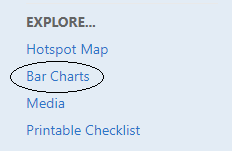
That’s it. The chart may take a few seconds to completely load, so be patient. Try it for Montrose Point and see what comes up.
Urban Birding Tip – Watch Those Pigeons
Have you ever seen a group of pigeons explode into flight or flying back and forth in a panic? When I’m walking around or driving through Chicago, I sometimes see pigeons launch into flight for no obvious reason. More often than not the source of their disturbance turns out to be a bird of prey, like a Cooper’s Hawk or Peregrine Falcon. The pigeons are smart enough to recognize the threat a hawk presents and they respond to that threat by getting up and flying around. This predator response is the same for other birds, like shorebirds or gulls that flush at the sight of a hawk, falcon, or other large bird of prey. So the next time you see a flock of pigeons explode into flight, look around, there might be a Peregrine Falcon or Red-tailed Hawk behind or above them.
Whoever said pigeons were useless was wrong.
Return of the Green Gunk
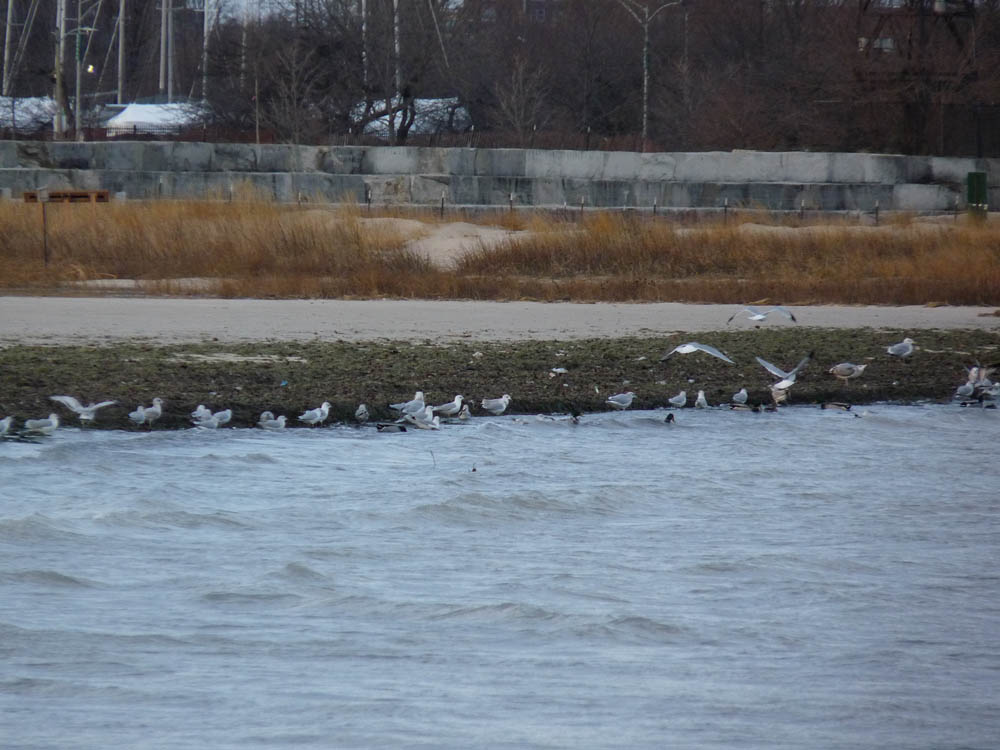
Herring and Ring-billed Gulls feeding in the algae mat at Montrose Beach (click to see the larger version)
The title of this post sounds like the title of a horror or monster movie — “Return of the Green Gunk!” On December 14 I was pleasantly surprised to find an extensive algae* mat at the east end of Montrose Beach. This algae mat developed when a powerful early winter storm churned up Lake Michigan and dumped large amounts of the stuff on the beach. I also noticed a group of Herring and Ring-billed Gulls picking through the algae for food. From what I could tell, and from what I’ve seen in the past, the gulls were hunting crayfish that washed in with the algae. Why does this matter? Because groups of active, feeding gulls attract more gulls that could include something unusual. Now that winter is here, there are multiple, possible rare gulls to consider. The algae could also attract a rare shorebird like a Purple Sandpiper or Red Phalarope. So if you venture out to Montrose this winter don’t forget to check the beach, and if there’s an algae mat, check it too. Once the beach gets covered in ice the algae mat won’t be accessible to gulls and shorebirds.
Only a birder gets excited about algae mats, right?
Comparison of Illinois Birds Recorded at Montrose Point vs. Illinois Birds not Recorded at Montrose Point
As of November 2020, 347 species of birds have been recorded at Montrose Point. This represents 77% of the 450 birds recorded in the state of Illinois. The pie chart below compares these two numbers. Not bad for a sliver of lakefront park in one of the largest and most densely populated urban areas in the United States.
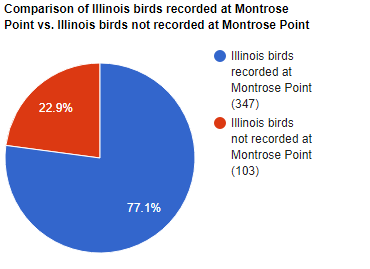
To see a list of the birds recorded at Montrose, refer to the Birds Recorded at Montrose Point in Chicago page.

